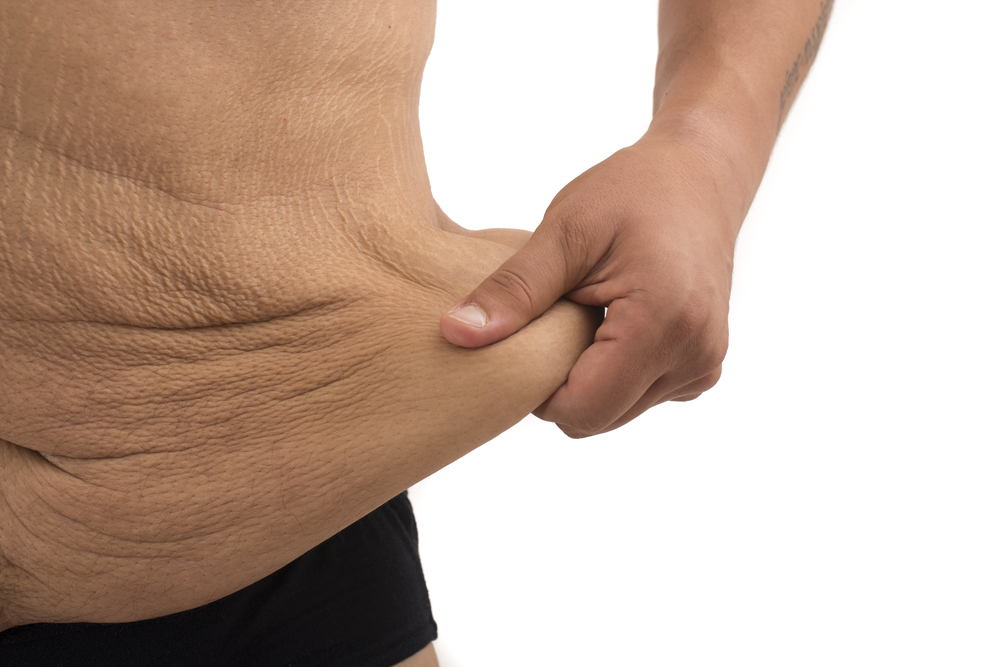What to Do About Excess Skin After Bariatric Operation?
Introduction: What to Do About Excess Skin After Bariatric Operation?
Excess Skin After Bariatric Operation: Bariatric surgery is a highly effective solution for significant weight loss and improving obesity-related health conditions. However, rapid and substantial weight loss often results in excess skin, which can cause physical discomfort and affect a person’s confidence. This article explores various options for managing and treating excess skin after bariatric surgery like Scarless Sleeve (SILS) or Mini-Gastric-Bypass, including non-surgical methods and surgical interventions.
Excess Skin After Bariatric Operation: Causes of Excess Skin After Bariatric Surgery
Rapid Weight Loss
When weight is lost rapidly, the skin typically cannot keep up with the shrinking body mass, leading to lose, sagging skin.
Loss of Skin Elasticity
Years of being stretched by excess fat can reduce the skin’s elasticity. As a result, when the fat is lost, the skin may not return to its original shape.
Age and Genetics
Older individuals and those with a genetic predisposition for less elastic skin may experience more pronounced excess skin after significant weight loss.
Excess Skin After Bariatric Operation: Non-Surgical Options
1. Strength Training and Exercise
Engaging in regular strength training and exercise can help tone underlying muscles, providing a firmer appearance and reducing the look of excess skin.
- Strength Training: Focuses on building muscle mass, which can fill out some areas of loose skin.
- Cardio Exercises: Helps with overall weight maintenance and improves skin health through increased circulation.
2. Hydration and Nutrition
Proper hydration and nutrition play crucial roles in skin health and elasticity.
- Hydration: Drinking plenty of water helps maintain skin hydration and elasticity.
- Balanced Diet: A diet rich in vitamins, minerals, and proteins supports skin health. Foods high in vitamins C and E, zinc, and collagen can improve skin’s elasticity.
3. Skin Care
Regular skin care can help improve the appearance and condition of excess skin.
- Moisturizers: Keeping the skin moisturized can enhance its elasticity.
- Skin-Firming Lotions: Some lotions contain ingredients like retinoids and collagen that may help tighten the skin.
- Massage: Regular massage can improve blood flow and stimulate the skin, potentially enhancing its appearance.
4. Compression Garments
Wearing compression garments can provide temporary support and help manage the appearance of excess skin. They can also reduce discomfort and improve confidence by creating a smoother silhouette under clothing.
Excess Skin After Bariatric Operation: Surgical Options
1. Body Contouring Surgery
Body contouring surgery involves removing excess skin and fat from various parts of the body. These procedures are often performed in stages and can be customized to target specific areas.
- Tummy Tuck (Abdominoplasty): Removes excess skin and fat from the abdominal area and tightens underlying muscles.
- Arm Lift (Brachioplasty): Removes excess skin from the upper arms.
- Thigh Lift: Removes excess skin from the thighs.
- Breast Lift (Mastopexy): Lifts and reshapes sagging breasts.
- Lower Body Lift: Addresses excess skin in the abdomen, buttocks, and thighs.
2. Timing and Considerations
It is generally recommended to wait at least 12–18 months after bariatric surgery before undergoing body contouring procedures. This allows weight to stabilize and gives the skin time to adjust.
- Consultation: A consultation with a board-certified plastic surgeon is crucial to discuss goals, expectations, and potential risks.
- Health and Safety: The patient’s overall health, nutritional status, and readiness for surgery must be assessed to ensure safe and effective outcomes.
3. Risks and Recovery
As with any surgical procedure, body contouring surgeries carry risks, including infection, scarring, and complications related to anesthesia. Recovery times vary depending on the extent of the procedures performed.
- Postoperative Care: Following the surgeon’s postoperative care instructions is vital for optimal healing and results.
- Support System: Having a strong support system during recovery can help manage day-to-day activities and emotional well-being.
Excess Skin After Bariatric Operation: Psychological Impact
Boosting Confidence
For many individuals, addressing excess skin significantly boosts self-esteem and confidence. Feeling more comfortable in their skin can lead to improved mental health and quality of life.
Support Groups and Counseling
Joining support groups or seeking counseling can provide emotional support and practical advice from others who have gone through similar experiences. This can help individuals manage expectations and navigate the emotional aspects of dealing with excess skin.
Conclusion: Excess Skin After Bariatric Operation
What to Do About Excess Skin After Bariatric Operation? Excess skin after bariatric surgery is a common and manageable concern. While non-surgical methods such as exercise, skin care, and nutrition can improve the condition of the skin, surgical options like body contouring provide more definitive solutions. Consulting with healthcare professionals and plastic surgeons can help individuals choose the best approach for their needs and achieve their desired outcomes. With the right strategies and support, patients can enhance their post-surgery results and enjoy a higher quality of life.





